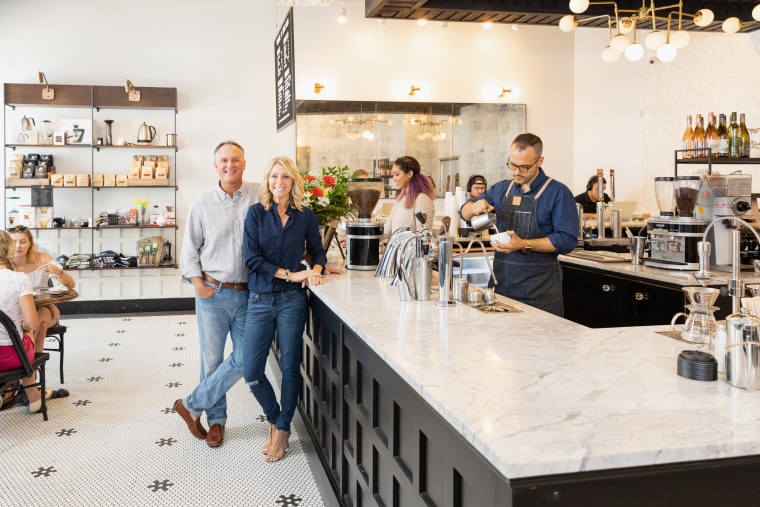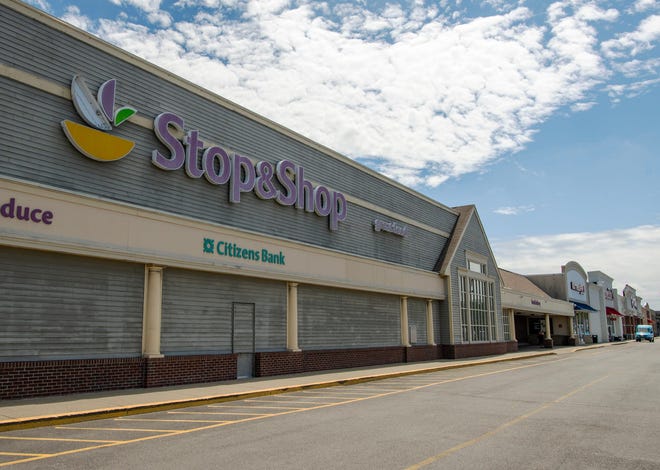People are buying more iced coffee – often where it’s more expensive.
Call it a convenience premium, but in a year when coffee prices have hit record highs, grabbing a cold caffeine fix on the go this summer could hurt your wallet more than you’re used to. Now, many consumers are finding better bargains at the grocery store and by cooking at home.
In coffee shops and restaurants, 35% of coffee orders are iced, up 7 percentage points since 2017, said Darren Seifer, a food and beverage analyst at research firm Circana. But as coffee drinkers have long known, cold brews tend to be more expensive.
During the first quarter, US consumers paid an average of $3.08 for a cup of regular coffee, $5.14 for an iced beverage and $5.46 for a latte, according to digital payment processor Toast. Typically higher-priced cold drinks — like iced espresso shakes and matcha tea lattes — helped Starbucks offset a drop in traffic in the second quarter.
“If you want the cheapest option, go ahead and get it at a retailer,” Seifer said, adding that convenience stores also “may be able to undercut quick service restaurants a little bit.”
Some consumers are already avoiding coffee counters.

From March 2023 to March 2024, 60% of iced coffee spending was on beverages purchased outside the home, up from 68% four years ago. At the same time, dry conditions in key growing regions have pushed up global coffee prices, even as coffee sold in U.S. grocery stores is becoming slightly cheaper. Prices were 1.6% lower in June than a year earlier, federal data showed.
Fortunately, coffee lovers have increasing options to enjoy an ice-cold cup in their kitchens.
If you want the cheapest option, go ahead and pick it up at a retailer.
About analyst Darren Seifer
In April, instant coffee maker Nescafé unveiled its “first cold brew instant coffee,” which makes dozens of cups from bottles that retail for a suggested price of $7.39 each, a few dollars more more than a single 16-ounce iced coffee at some Starbucks. locations after tax. The company said it has seen “increasing demand for espresso-based drinks and iced coffee – alongside a growing interest in making these coffee shop-quality drinks from home”.
Later this year, Keurig is releasing a “K-Brew+Chill” machine for home iced coffee lovers. The device, which the company said will cost about $200, promises to brew hot coffee and then cool it down to a “coffee shop-cold” temperature in three minutes or less.
“The next evolution is really the ability to bring coffee-style beverages into the home and onto the counter,” said Josh Hulett, senior vice president of product management, in a recent promotional video.
Part of this evolution has been years in the making. During the pandemic, many Americans switched from grabbing coffee on the way to the office to fixing it on the way to the couch. As grocery store brands like Nestlé and Keurig look to reinforce the habit, coffee shop operators are scrambling to bring iced coffee drinkers back. And brands that sell in both environments are trying to do both.
Dunkin’, for example, is looking to attract consumers to its line of cold, “refreshing” coffees this summer by promoting them under the “Big Dunkin’ Iced Energy” banner. The company also recently relaunched its on-the-go and at-home coffee bottles on retail shelves.
Smaller operators are also trying to go after customers who might not want to pay a barista $5 or more to pour them a cold drink from a pitcher.

Dave Ward, co-founder of Buddy Brew Coffee in the Tampa, Florida, area, said the home coffee classes she’s offered for years are now “full.” The two-hour sessions, held inside its original coffee shop, include a $69 class on the science of brewing coffee and a $175 class on creating latte art.
Buddy Brew raised menu prices by about 20% in 2021 and 2022 to offset higher costs for everything from labor, real estate and shipping to the coffee beans themselves. And like the big corporate chains, the company has also seen customers be a little more frugal lately. The average order value is down about 3% since last year, even though foot traffic is up slightly.
One advantage, however, is the line of coffee products that Buddy Brew sells in supermarkets like Whole Foods and Publix. The chain’s 12-ounce bags of coffee, which make about 24 cups including Cold Brew, start at $18 on its website — about 75 cents a cup. That compares to its Hyde Park, Tampa location’s charges of $4.75 for a 20-ounce cold drink ordered online for pickup or a 10.5-ounce canned option.
While Buddy Brew has raised prices modestly on its food items, Ward said those sales “have continued to do extremely well.”


